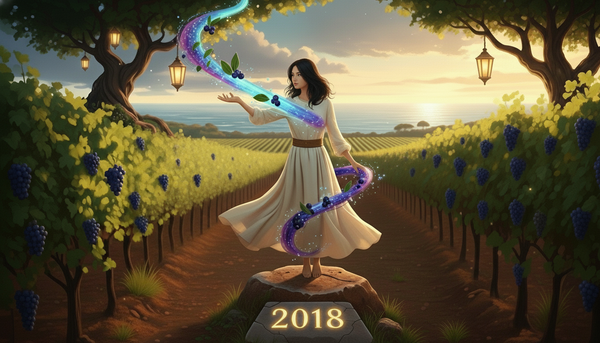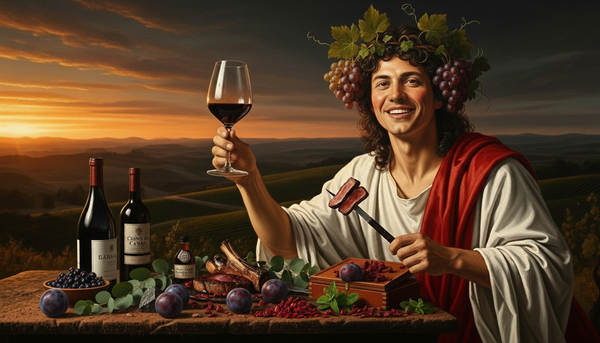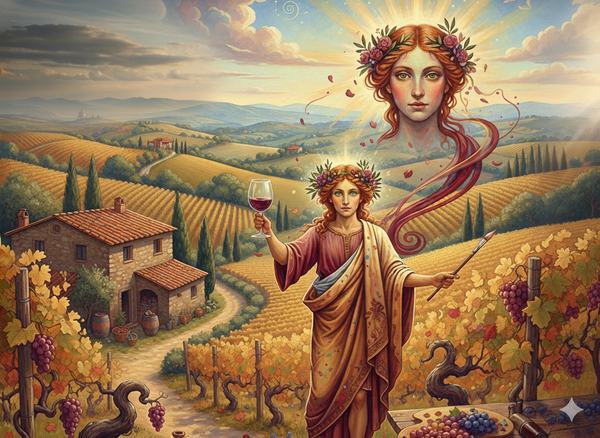Barossa Valley: A Lunar-Lit Odyssey Through Australia’s Iconic Wine Heartland

Introduction
As twilight melts into dusk, the Barossa Valley quietly comes alive under the glow of a rising moon. It’s a subtle presence, illuminating vineyards gently rolling like ocean waves beneath its soft, silver light, bathing rows of ancient vines in quiet luminescence. I recall my first evening tasting at Seppeltsfield, savoring a Shiraz so smooth it felt like drinking bottled starlight. Here, beneath the subtle touch of moonbeams, you sense that the Barossa isn't merely wine country—it's a gentle journey, an intimate sensory pilgrimage.
History & Pivotal Moments
The Barossa story begins in 1842, when industrious Silesian settlers arrived, planting the seeds for Australia’s wine identity. These early pioneers, skilled farmers escaping religious persecution, brought meticulous vineyard practices and created tight-knit communities whose legacy still defines the region.
A watershed moment arrived in the 1950s when Penfolds' visionary winemaker Max Schubert birthed the iconic Grange—a bold, age-worthy Shiraz that shifted Australia's global wine reputation forever. Initially rejected, Grange became a cult classic, setting auction records and transforming Barossa’s image from rustic charm to sophisticated pedigree.
The 1980s saw the rise of boutique wineries like Torbreck and Henschke, embracing old-vine fruit and minimalist winemaking. They sparked a renaissance, capturing worldwide attention by emphasizing authenticity and terroir over volume.
Most recently, Barossa’s global acclaim was cemented by Robert Parker’s rapturous reviews in the late 1990s, launching small, family-run wineries into the international spotlight overnight.
Terroir Deep-Dive
Climate
The Barossa's Mediterranean climate offers generous sunshine, tempered by cool evenings. Hot, dry summers encourage grapes to ripen fully, crafting robust flavors, while significant diurnal shifts—warm days followed by brisk nights—preserve acidity, ensuring elegant wines despite their intensity. Eden Valley’s higher elevations amplify this contrast, allowing Riesling to develop crystalline precision.
Soil Composition
Beneath the vines lies a mosaic: iron-rich terra rossa, imparting structure and a vibrant minerality; sandy loam, which contributes subtle aromatics; and ancient schist that lends tension and longevity, especially to old-vine Shiraz.
Topography & Viticultural Factors
Gently rolling hills define Barossa, punctuated by steep slopes and altitudes ranging from 200 to 550 meters. Rainfall is modest, forcing vines to dig deep, resulting in concentrated fruit. The valley is uniquely blessed with old vines—many exceeding a century—which yield wines of profound depth and nuance, like wisdom distilled into each glass.
Renowned Producers
Penfolds
A pillar of Australian wine, Penfolds' Grange Shiraz is legendary. Rich and brooding, it exudes blackberry jam, espresso, and silky tannins—complexity wrapped in midnight velvet.
Yalumba
Australia’s oldest family-owned winery, Yalumba, champions sustainable viticulture. Their Signature Cabernet-Shiraz blend whispers of eucalyptus and mocha, layered yet elegant, a classic handshake between tradition and modernity.
Torbreck
Torbreck showcases old-vine elegance in 'RunRig', a plush Shiraz layered with black cherry, spice, and whispers of smoke—a smooth cloak over iron strength.
Henschke
Famous for the exquisite ‘Hill of Grace’, Henschke produces wines of spiritual depth. With ethereal aromas of violets and wild raspberries, this Shiraz dances softly but leaves an indelible impression.
Iconic Wine Styles & Tasting Notes
Barossa Shiraz is lush with dark plum, licorice, and chocolate, flowing gracefully like rich satin over intense complexity. GSM blends (Grenache, Shiraz, Mourvèdre) are lighter yet spicy, a berry-and-pepper melody, approachable but deeply nuanced. Eden Valley Riesling dazzles—crisp, lime-infused precision, a laser beam cloaked in floral silk.
Fortifieds, often overlooked gems, echo Barossa’s past. Tawny ports glide across the palate with nutty warmth, evoking caramelized fig embraced by smoky oak, a comforting fireside chat in liquid form.
Investment Potential
Barossa’s iconic wines—especially from heritage vineyards—offer significant investment potential. Penfolds Grange regularly fetches impressive auction results; a 1951 vintage famously sold for over $80,000. Henschke’s Hill of Grace continues to appreciate, gaining nearly 50% in secondary-market value over the past decade, proving the region’s wines aren’t just delicious—they’re savvy financial bets.
Climate Change & Producer Adaptations
Barossa isn’t immune to climate shifts; harvest dates now creep forward nearly two weeks earlier than decades past. Producers like Yalumba experiment with drought-resistant rootstocks and shade-cloth covers to protect grapes from intense heat, while others explore varieties better suited to warmer futures, such as Tempranillo and Grenache Blanc.
Eco-Friendly & Organic Practices
Many Barossa producers champion sustainability. Henschke and Yalumba lead biodynamic farming, embracing holistic vineyard practices that synchronize with lunar cycles—a celestial dance guiding the vines. Carbon-neutral initiatives and meticulous water management programs underscore a commitment to stewarding this lunar-lit land for generations to come.
Expert Enjoyment Guide
Barossa reds reward patience; Shiraz and premium GSM blends shine brightest after five to fifteen years. Serve these reds at a cellar-cool 60°F in ample-bowled glasses to amplify their rich aromatics. Eden Riesling prefers a crisp 45°F in slender flutes, enhancing its crystalline precision.
As for pairings, imagine Shiraz with rosemary-crusted lamb chops, each bite harmonizing like lovers dancing beneath moonlight. Riesling sparkles next to Thai green curry—spicy complexity gracefully twirling with zesty clarity, a midnight barn-dance in every sip.
Conclusion
The Barossa Valley, bathed in lunar radiance, embodies both resilience and evolution. As climate shifts and tastes evolve, the region adapts without losing its heart—a dance led by vintners who honor the past while embracing innovation. From my celestial vantage, sipping wines beneath moonlit skies, it’s clear that Barossa’s story, like its finest vintages, only deepens with time.





